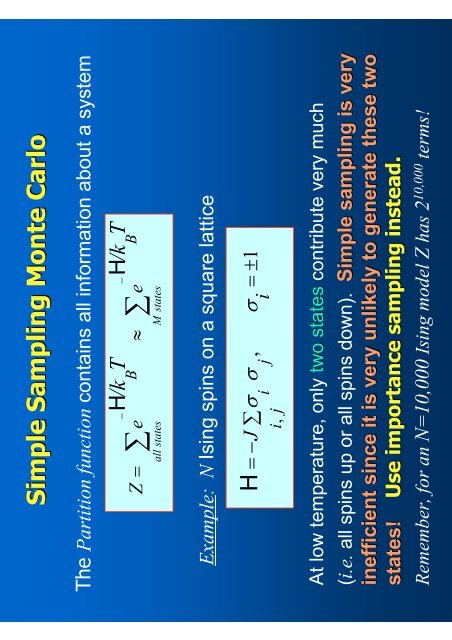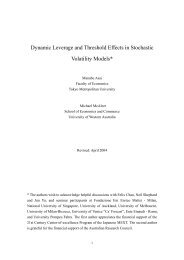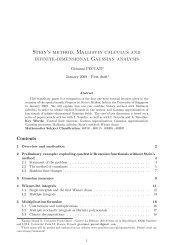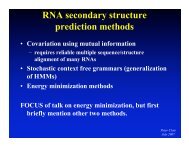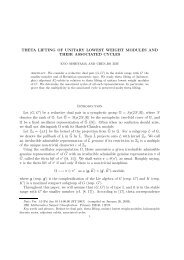An Introduction to Monte Carlo Methods in Statistical Physics.
An Introduction to Monte Carlo Methods in Statistical Physics.
An Introduction to Monte Carlo Methods in Statistical Physics.
Create successful ePaper yourself
Turn your PDF publications into a flip-book with our unique Google optimized e-Paper software.
Simple Sampl<strong>in</strong>g <strong>Monte</strong> <strong>Carlo</strong><br />
Simple Sampl<strong>in</strong>g <strong>Monte</strong> <strong>Carlo</strong><br />
The Partition function conta<strong>in</strong>s all <strong>in</strong>formation about a system<br />
Z =<br />
all<br />
∑<br />
e<br />
states<br />
−<br />
H /k<br />
T<br />
B ≈ e<br />
∑<br />
M states<br />
−<br />
H /k<br />
B<br />
T<br />
Example: N Is<strong>in</strong>g sp<strong>in</strong>s on a square lattice<br />
H<br />
= − J<br />
i<br />
∑<br />
,<br />
j<br />
σ<br />
i<br />
σ<br />
j<br />
, σ<br />
i<br />
= ± 1<br />
At low temperature, only two states contribute very much<br />
(i.e. all sp<strong>in</strong>s up or all sp<strong>in</strong>s down). Simple sampl<strong>in</strong>g is very<br />
<strong>in</strong>efficient s<strong>in</strong>ce it is very unlikely <strong>to</strong> generate these two<br />
states! Use importance sampl<strong>in</strong>g <strong>in</strong>stead.<br />
Remember, for an N=10,000 Is<strong>in</strong>g model Z has 2 10,000 terms!


